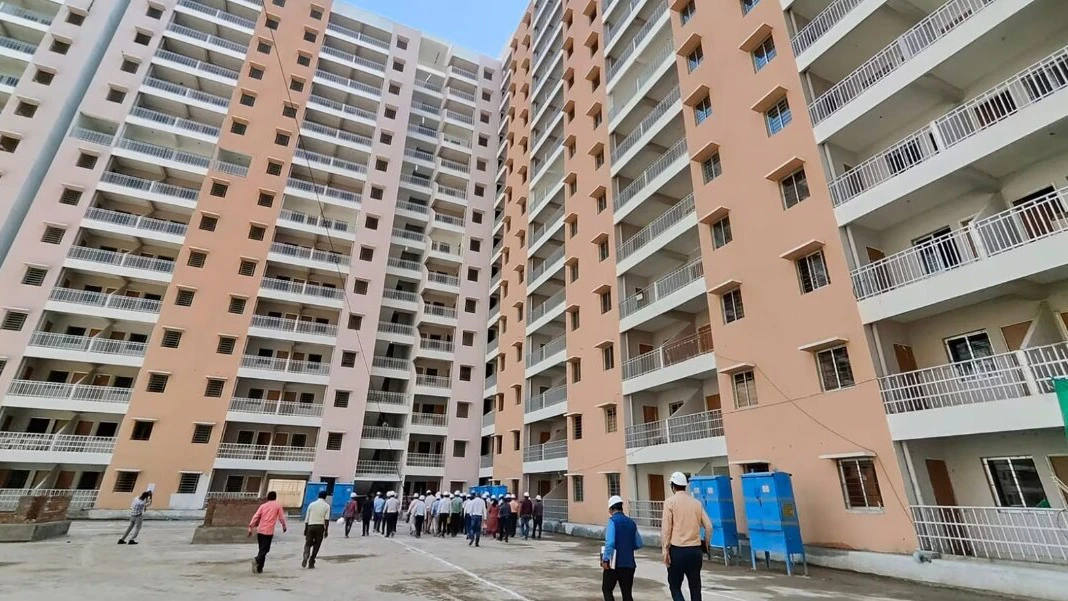Table of Content
The festive season often inspires homeowners to renovate, upgrade, or make long-awaited purchases. For many, however, dipping into savings isn’t ideal, especially when financial goals like retirement or education are on the horizon. This is where a top-up home loan can be a practical alternative, offering quick access to funds at lower interest rates than personal loans.
As Diwali approaches, lenders are offering attractive promotions and expedited approvals. But before you apply, it’s essential to understand how a top-up home loan works, its benefits, and the key factors to consider.
A Real-World Example
Take the case of a Pune-based software professional who decided to renovate his decade-old apartment ahead of Diwali. Instead of opting for a personal loan or withdrawing from savings, he chose a top-up home loan. His bank processed the ₹8 lakh loan within 48 hours at an interest rate of 9.2% significantly lower than the 13–18% typically charged for personal loans.
The funds were credited directly to his account, enabling him to begin renovations without delay. However, this also meant a higher monthly EMI, which he had accounted for in advance. His experience highlights why many salaried professionals are increasingly using top-up home loans during festive seasons to finance home upgrades or major expenses.
Also Read: Can Developers Forfeit Booking Amounts Without a Signed Sale Agreement?
How Fast Are Top-Up Home Loans Sanctioned?
In today’s digital lending ecosystem, the approval process for a top-up home loan has become remarkably swift. With automated credit checks and API-linked verification, most banks can process applications within 48 to 72 hours.
“Top-up loans are now being disbursed faster than ever before. Once the borrower’s repayment record and property documents are verified, funds can be released within a couple of days,” said Atul Monga, Co-founder and CEO, BASIC Home Loans.
For borrowers with a strong credit profile or pre-approved eligibility, the turnaround time can be as short as 24 hours making it one of the fastest forms of secured credit in the market today.
Interest Rates and Charges
One of the major advantages of a top-up home loan is its relatively low cost compared to other borrowing options. Typically, the interest rate is 0.5% to 1% higher than the borrower’s existing home loan rate.
Currently, banks are offering rates between 9% and 10.5%, while non-banking financial companies (NBFCs) charge between 10.5% and 12%. Fintech-linked offerings may even start as low as 8.9%, depending on the borrower’s profile and loan tenure.
Processing fees generally range from 0.25% to 1% of the loan amount. Floating-rate top-up loans usually have no prepayment penalties, allowing borrowers to repay early without extra cost. This combination of flexibility and affordability makes top-up home loans ideal for short-term funding needs.
Does a Top-Up Home Loan Make Sense?
A top-up home loan can be a sensible choice for those who already have an existing home loan with a good repayment record. It’s especially useful for purposes like home renovation, debt consolidation, medical emergencies, or business expansion.
Financial experts say that using this facility is often smarter than opting for a personal loan. “Top-up loans generally have lower interest rates and minimal documentation since the borrower’s property is already mortgaged,” said Raoul Kapoor, CEO of Andromeda Sales and Distribution.
Moreover, if the funds are used for home improvement or construction, borrowers may even claim tax benefits on the interest paid an advantage that personal loans do not offer.
What Borrowers Must Keep in Mind
While the festive season may encourage spending, it’s crucial to approach a top-up home loan with financial discipline. Borrowers should evaluate their repayment capacity and ensure that total EMIs, including existing commitments, do not exceed 40% of their take-home income.
“Before taking a top-up loan, borrowers must assess their cash flow and repayment ability,” advised Pramod Kathuria, Founder & CEO of Easiloan.
Top-up loans are flexible in end-use, meaning the funds are credited directly to the borrower’s account and can be used for various purposes home renovation, festive purchases, or even personal expenses. However, experts recommend avoiding using the amount for luxury or non-essential spending.
Many lenders also announce special Diwali offers, such as processing fee waivers or lower starting rates, but borrowers should read the fine print and compare options before signing up. Choosing the right tenure and rate type (fixed or floating) can help manage EMIs more efficiently.
Also Read: Private Equity Inflows in Indian Real Estate Rise 20% in Q3 2025
Expert Insights
Industry experts agree that a top-up home loan is among the most efficient ways to access additional funds quickly. Since the borrower already has an existing mortgage, lenders are more confident extending credit without fresh security.
“Borrowers with strong repayment track records can unlock liquidity with minimal hassle. But the key is to use these funds wisely and avoid unnecessary debt,” said Monga.
If used judiciously, such loans can bridge short-term financial needs without straining long-term savings or disrupting investment plans.
Conclusion
A top-up home loan can be a smart financial move this Diwali offering quick access to funds at competitive rates with minimal documentation. For homeowners planning renovations or festive upgrades, it’s a far more economical option than personal loans.
However, borrowers should proceed with caution, ensuring that repayments fit comfortably within their monthly budgets. With responsible planning and a clear purpose, a top-up home loan can help you celebrate the festive season without compromising financial stability or long-term goals.








_1766133697.webp)
Ans 1. A top-up home loan is an additional loan sanctioned over and above an existing home loan. It allows borrowers to access extra funds at lower interest rates compared to personal loans, typically for purposes like home renovation, debt consolidation, or emergencies.
Ans 2. Individuals who already have an existing home loan with a good repayment record are eligible. The loan amount and interest rate depend on the borrower’s credit history, repayment capacity, and the outstanding home loan.
Ans 3. With modern digital processes, most banks approve top-up loans within 48–72 hours. For borrowers with strong credit profiles or pre-approved eligibility, disbursal can happen in as little as 24 hours.
Ans 4. Banks generally charge 0.5%–1% higher than the existing home loan rate, usually between 9% and 10.5%. NBFCs charge between 10.5% and 12%, while fintech lenders may offer rates as low as 8.9%, depending on the borrower’s profile.
Ans 5. Processing fees typically range from 0.25% to 1% of the loan amount. Floating-rate top-up loans often have no prepayment penalties, allowing early repayment without additional cost.
Ans 6. Yes, top-up loans are flexible and can be used for home renovations, festive purchases, medical emergencies, or other personal needs. However, experts recommend avoiding luxury or non-essential spending.
Ans 7. If the funds are used for home improvement or construction, borrowers can claim tax benefits on the interest paid under Section 24(b) of the Income Tax Act, which is not available on personal loans.
Ans 8. Borrowers should ensure that the total EMI, including existing loans, does not exceed 40% of their monthly take-home income. This prevents overburdening your finances.